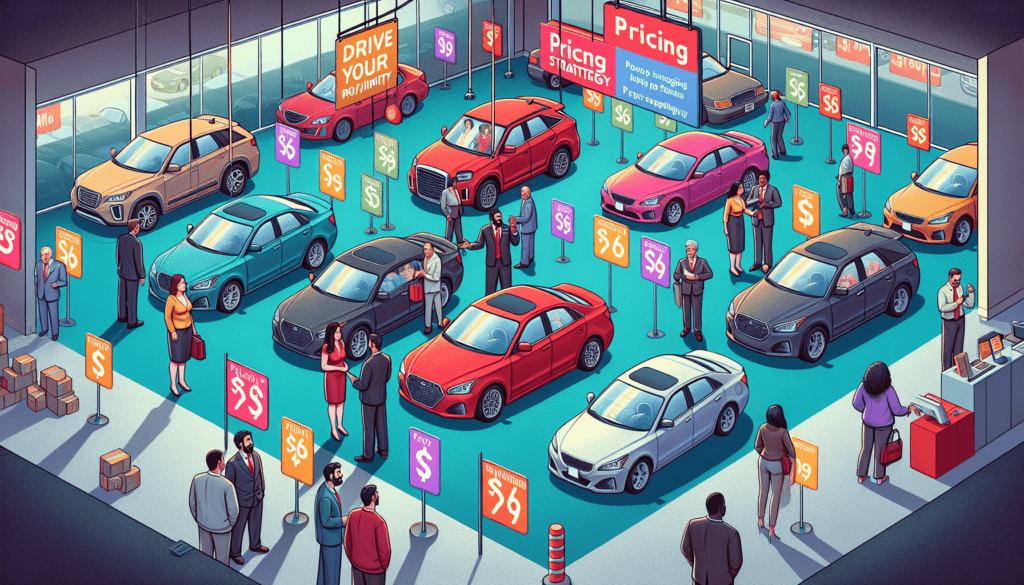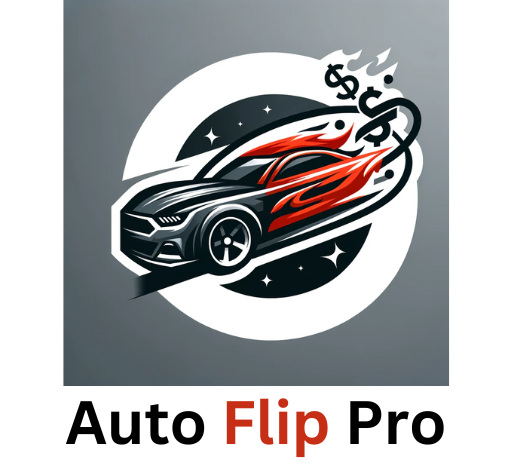You have probably wondered just how important pricing strategy is when it comes to buying or selling a car. Well, wonder no more! This article will shed light on the crucial role that pricing strategy plays in the world of car sales. Whether you are a car buyer looking for the best deal or a car seller aiming to maximize profits, understanding the intricacies of pricing strategy can make all the difference. So buckle up and get ready to discover the secrets behind successful car sales!
Setting the Initial Price
Determining Cost Factors
When setting the initial price of a car, one of the main considerations is the cost factors involved in manufacturing and selling the vehicle. This includes factors such as the cost of materials, labor, research and development, marketing, and overhead expenses. By carefully evaluating these cost factors, car manufacturers can determine a baseline price that covers their expenses while still ensuring profitability.
Considering Market Demand
Another important factor in setting the initial price of a car is the market demand for that particular vehicle. Car manufacturers need to take into account factors such as consumer preferences, trends, and buying behaviors. By conducting market research and analyzing consumer data, car manufacturers can gain insights into the demand for different types of vehicles and use this information to determine an appropriate price point.
Evaluating Competitors’ Pricing
In order to remain competitive in the car sales industry, it is crucial to evaluate the pricing strategies of competitors. By analyzing what their competitors are charging for similar vehicles, car manufacturers can gain a better understanding of market trends and adjust their pricing strategy accordingly. This evaluation ensures that their pricing is in line with market expectations and helps them remain competitive in a crowded marketplace.
Establishing a Profit Margin
At the end of the day, the primary goal of any pricing strategy in car sales is to generate a profit. Car manufacturers need to establish a profit margin that allows them to cover their costs and make a reasonable return on investment. This involves carefully considering the cost factors, market demand, and competitors’ pricing to arrive at a price point that not only attracts customers but also ensures profitability for the business.
Creating Incentives
Discounts and Rebates
To attract customers and boost sales, car manufacturers often offer discounts and rebates. These incentives can take various forms, such as cash discounts, rebates on previous models, or special financing offers. By offering discounts and rebates, car manufacturers can create a sense of urgency and provide customers with a financial incentive to make a purchase.
Promotional Offers
Promotional offers can be a powerful tool in generating interest and driving sales in the car industry. These offers can include limited-time promotions, exclusive deals, or bundled packages that provide additional value to customers. By creating promotional offers, car manufacturers can differentiate themselves from competitors and entice potential customers to choose their vehicles over others.
Special Financing Options
Car manufacturers often provide special financing options to make purchasing a car more affordable for customers. These options can include low-interest rates, extended repayment terms, or even zero-percent financing. By offering special financing options, car manufacturers can make their vehicles more accessible to a wider range of customers, increasing the likelihood of a sale.
Trade-in Allowances
Trade-in allowances are another incentive used in the car sales industry. By offering a trade-in allowance, car manufacturers make it easier for customers to upgrade their vehicles by reducing the overall cost of their purchase. This can help to incentivize customers to choose a particular brand or model and can also lead to repeat business in the future.

Differentiating Product Categories
Pricing Based on Vehicle Type
One way to differentiate product categories in the car sales industry is by pricing based on the type of vehicle. For example, sports cars and luxury SUVs might have higher price points compared to compact cars or economy vehicles. By establishing different price ranges for different vehicle types, car manufacturers can cater to the specific needs and preferences of different customer segments.
Segmenting by Features
Another approach to differentiating product categories is by segmenting vehicles based on their features. This allows car manufacturers to target different customer segments with specific pricing strategies. For instance, vehicles with advanced safety features or cutting-edge technology may be priced higher than those without such features. This segmentation strategy allows car manufacturers to appeal to customers who value certain features and are willing to pay a premium for them.
Pricing for Luxury vs. Economy Cars
Pricing strategies can also be tailored to cater to the different market segments of luxury and economy cars. Luxury cars often come with a higher price tag due to their premium features, brand reputation, and exclusivity. Economy cars, on the other hand, are priced more affordably to appeal to budget-conscious customers. By understanding the different needs and expectations of luxury and economy car buyers, car manufacturers can establish appropriate pricing strategies for each segment.
Targeting Specific Consumer Groups
Car manufacturers can also differentiate their product categories by targeting specific consumer groups. This involves understanding the demographics, preferences, and purchasing behaviors of different customer segments and adjusting pricing strategies accordingly. For example, pricing strategies for families with young children may focus on safety and practicality, while pricing strategies for young professionals may emphasize style and performance.
Implementing Psychological Pricing
Using Odd Pricing
Psychological pricing techniques can be effective in influencing consumer perception and behavior. One commonly used technique is odd pricing, where prices are set just below a round number (e.g., $9,995 instead of $10,000). This creates the illusion of a lower price and can make the product seem more affordable. By implementing odd pricing in the car sales industry, car manufacturers can tap into the psychology of pricing and potentially increase sales.
Employing Prestige Pricing
Prestige pricing is a strategy often used in the luxury car market, where higher prices are associated with superior quality and exclusivity. By setting prices at a premium level, car manufacturers can create an image of luxury and desirability. This strategy appeals to consumers who are willing to pay a premium for a prestigious brand and the social status associated with owning a luxury car.
Applying Bundle Pricing
Bundle pricing involves offering multiple products or services together at a discounted price. In the car sales industry, this could include bundling additional features or accessories with the vehicle purchase. By applying bundle pricing, car manufacturers can increase the perceived value of their offerings and encourage customers to choose their brand over competitors. This strategy also helps to simplify the purchasing process for customers by offering a packaged deal.
Leveraging Price Anchoring
Price anchoring is a technique where a higher-priced item is displayed alongside a similar but lower-priced item. By comparing the two prices side by side, consumers tend to perceive the lower-priced item as a better deal. In the car sales industry, car manufacturers can leverage price anchoring by displaying multiple models with varying price points, making the lower-priced models appear more affordable and enticing to potential customers.

Utilizing Pricing Strategies in Marketing
Penetration Pricing
Penetration pricing is a pricing strategy where a car manufacturer sets an initial low price for a new model to quickly gain market share. This strategy is often used when entering a new market or when facing intense competition. By offering a low price, car manufacturers can attract customers and encourage them to try their brand or model, potentially leading to long-term customer loyalty.
Skimming Pricing
Skimming pricing involves setting a high initial price for a new or innovative product and gradually lowering the price over time. This strategy is often used for luxury or high-end vehicles and allows car manufacturers to capitalize on early adopters who are willing to pay a premium for the latest technology or features. As the product matures and competition increases, car manufacturers can gradually lower the price to attract a wider customer base.
Premium Pricing
Premium pricing is a strategy where car manufacturers set higher prices for their products to position them as premium or high-quality options. This strategy relies on branding, reputation, and perceived value to justify the higher price tag. Premium pricing is often used for luxury vehicles or high-performance sports cars, where customers are willing to pay a premium for exclusive features, craftsmanship, and the overall brand experience.
Value-based Pricing
Value-based pricing involves setting prices based on the perceived value that a product or service offers to the customer. Car manufacturers can use this strategy by emphasizing the unique features, performance, safety, or fuel efficiency of their vehicles. By effectively communicating the value that their vehicles provide, car manufacturers can justify higher price points and appeal to customers who prioritize quality and functionality.
Evaluating Price Elasticity
Determining Price Sensitivity
Price sensitivity refers to how responsive customers are to changes in price. It is crucial for car manufacturers to understand the price sensitivity of their target market to effectively set prices. By conducting market research, analyzing customer data, and monitoring consumer behavior, car manufacturers can gain insights into price sensitivity and adjust their pricing strategies accordingly.
Analyzing Price Elasticity of Demand
Price elasticity of demand measures how a change in price affects the quantity demanded of a product. By analyzing the price elasticity of demand for their vehicles, car manufacturers can determine the impact of price changes on sales volume. This analysis helps car manufacturers identify the price points that maximize revenue and profitability.
Calculating Price-Volume Relationships
Understanding the relationship between price and volume is essential for determining optimal pricing strategies. Car manufacturers can calculate price-volume relationships by analyzing historical sales data, conducting pricing experiments, or using statistical models. This analysis helps determine the price points that maximize sales volume and revenue, taking into account different market conditions and customer preferences.
Monitoring Price Points and Sales Impact
Regularly monitoring price points and their impact on sales is crucial for adjusting pricing strategies. By tracking sales data, customer feedback, and market trends, car manufacturers can identify the effectiveness of their pricing strategies and make necessary adjustments. This ongoing monitoring allows car manufacturers to stay competitive and responsive to changes in the market and customer demand.
Addressing Market and Economic Conditions
Adapting to Competitive Price Wars
Competitive price wars can occur when multiple car manufacturers aggressively lower their prices to gain market share. In such situations, it is important for car manufacturers to carefully evaluate the impact of their pricing decisions on profitability and sustainability. By strategically adjusting prices, adding value to their offerings, or focusing on unique selling propositions, car manufacturers can withstand price wars and maintain a competitive edge.
Adjusting Prices in Response to Market Shifts
Market shifts, such as changes in consumer preferences, shifts in buying behaviors, or emerging trends, can significantly impact the demand for certain vehicles. In response to these market shifts, car manufacturers may need to adjust their pricing strategies to remain relevant and competitive. This could involve introducing new models, updating features, or even repositioning their brand to align with changing market dynamics.
Considering Inflation and Currency Fluctuations
Inflation and currency fluctuations can have a direct impact on the cost of production and the pricing of vehicles. Car manufacturers need to consider these economic factors when setting prices to ensure that they are able to cover their costs and maintain profitability. By closely monitoring inflation rates and currency exchange rates, car manufacturers can make necessary adjustments to their pricing strategies to mitigate the impact of economic fluctuations.
Pricing Strategies During Economic Downturns
During economic downturns, consumer purchasing power may be reduced, and demand for vehicles may decline. In response, car manufacturers may need to implement pricing strategies that cater to cost-conscious customers. This could involve offering more affordable models, providing flexible financing options, or introducing cost-saving initiatives. By adapting their pricing strategies to the economic climate, car manufacturers can better navigate challenging market conditions.
Optimizing Pricing for Different Channels
Online Car Sales and Pricing Strategy
The rise of online car sales platforms has revolutionized the way cars are bought and sold. When optimizing pricing for online channels, car manufacturers need to consider factors such as price transparency, market competition, and customer expectations. By strategically pricing their vehicles for online sales, car manufacturers can attract digital-savvy customers and effectively compete in the e-commerce space.
Pricing for Traditional Dealerships
Traditional dealerships continue to play a significant role in car sales. When pricing vehicles for traditional dealerships, car manufacturers need to consider factors such as dealership margins, competition among dealers, and the buying experience for customers. By working closely with dealerships and offering competitive pricing, car manufacturers can ensure that their vehicles are positioned favorably in traditional sales channels.
Incorporating Auctions and Wholesale Pricing
Auctions and wholesale pricing can be effective channels for selling vehicles in bulk to dealers or other businesses. When participating in auctions or setting wholesale prices, car manufacturers need to consider factors such as market demand, vehicle condition, and forecasted resale values. By carefully pricing vehicles for auctions and wholesale transactions, car manufacturers can maximize their returns while maintaining strong relationships with their business partners.
Leasing and Rental Pricing Approaches
Leasing and rental pricing approaches require car manufacturers to consider factors such as depreciation, residual values, and lease terms. By tailoring their pricing strategies for leasing and rental agreements, car manufacturers can appeal to customers who prefer flexible ownership options or short-term vehicle use. This allows car manufacturers to tap into new market segments and generate additional revenue streams.
The Importance of Effective Pricing Communication
Transparent Pricing Information
Effective pricing communication starts with providing transparent and accurate pricing information to customers. Car manufacturers need to ensure that prices are clearly displayed and easily accessible, whether through their website, advertising materials, or in-person at dealerships. By being transparent about pricing, car manufacturers can build trust with customers and eliminate any uncertainties or doubts.
Clear and Simple Pricing Structures
Complex pricing structures can confuse and frustrate customers. Car manufacturers should strive to create clear and simple pricing structures that are easy to understand. This includes avoiding hidden fees or complicated calculations. By simplifying pricing structures, car manufacturers can make the purchasing process more straightforward and transparent for customers.
Avoiding Hidden Fees and Surprises
Hidden fees and surprise charges can negatively impact the customer experience and erode trust. Car manufacturers should strive to be upfront about any additional fees or charges associated with purchasing a vehicle. By avoiding hidden fees and surprises, car manufacturers can build a reputation for transparency and fairness, leading to more satisfied and loyal customers.
Building Trust and Credibility with Customers
Effective pricing communication is not just about conveying price information; it is also about building trust and credibility with customers. Car manufacturers should communicate their pricing strategies in a genuine and authentic manner, emphasizing the value and benefits of their vehicles. By establishing trust and credibility, car manufacturers can establish long-term relationships with customers and foster brand loyalty.
Adapting Pricing Strategy to the Used Car Market
Factors Influencing Used Car Pricing
The pricing of used cars is influenced by various factors, including the age, mileage, condition, and demand for the vehicle. Car manufacturers and dealers need to carefully assess these factors when pricing used cars to ensure they are competitive in the market. By accurately gauging the value of used cars, car manufacturers can attract buyers and maintain profitability in the used car market.
Determining Appropriate Depreciation Rates
Depreciation rates play a significant role in pricing used cars. Car manufacturers need to consider factors such as market demand, historical data, and industry trends when determining appropriate depreciation rates. By setting realistic depreciation rates, car manufacturers can price used cars competitively and maximize their returns on these vehicles.
Competing Against Private Sellers
Private sellers can often offer used cars at lower prices compared to car manufacturers. To compete effectively against private sellers, car manufacturers need to emphasize the unique benefits and advantages of purchasing a used car from a reputable brand or dealership. By offering warranties, certified pre-owned programs, and additional services, car manufacturers can differentiate themselves from private sellers and attract customers who prioritize reliability and peace of mind.
Certified Pre-Owned Pricing Strategies
Certified pre-owned (CPO) vehicles are used cars that have undergone rigorous inspections and meet specific criteria set by the manufacturer. Pricing strategies for CPO vehicles need to consider factors such as the cost of certification, the additional benefits provided, and the perceived value of a certified vehicle. By offering competitive pricing for CPO vehicles, car manufacturers can attract customers who are looking for reliable and well-maintained used cars.

